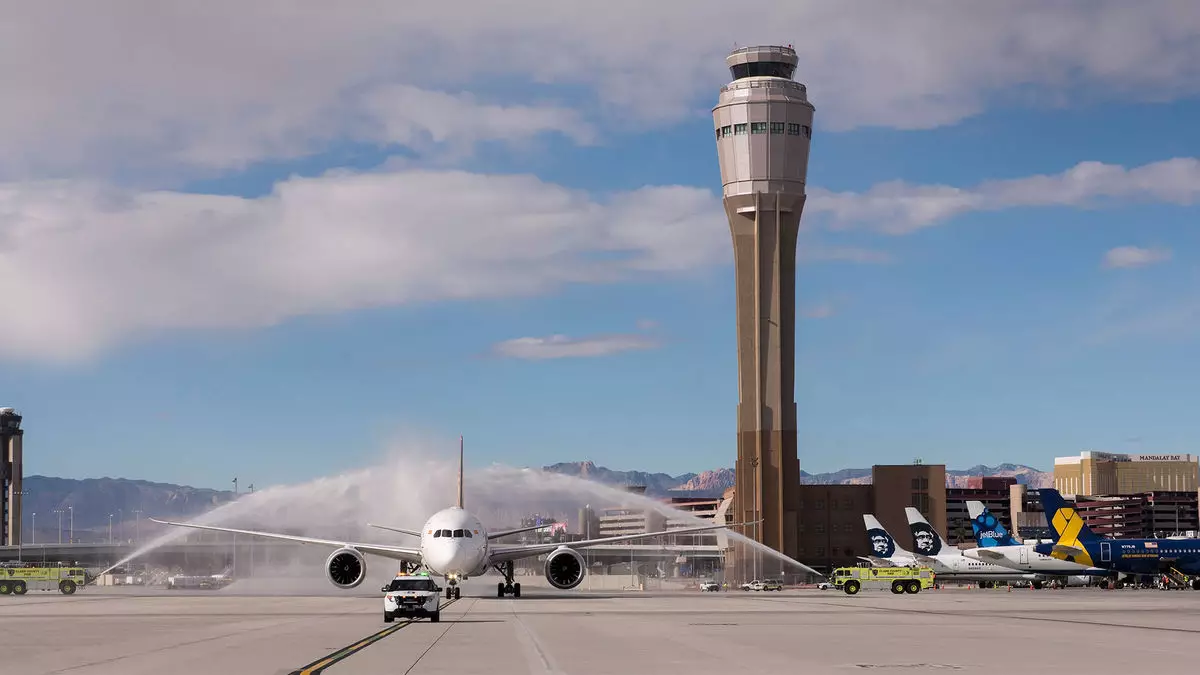As Southern Nevada gears up for a pivotal transformation in its aviation infrastructure, the spotlight is firmly on the planned expansion of Harry Reid International Airport (previously known as McCarran International Airport). Given the burgeoning demand for air travel, with the airport recording a staggering 57.6 million passengers in 2023 alone, major renovations are not just desired but necessary. On October 1, 2023, the Clark County Commission received a detailed proposal from the Department of Aviation aimed at enhancing the aging facilities within Terminal 1, which currently accommodates around 75% of passenger traffic.
Bryant Holt, the managing director of planning for the Clark County Department of Aviation, articulated the challenges posed by the outdated design and infrastructure of Terminal 1. Despite efforts to optimize operations, the terminal’s age stands as a significant hindrance to improving passenger flow and overall experience. The absence of a secondary terminal further complicates matters, leading to confusion and inefficiency among travelers. Recognizing that the old infrastructure cannot sustainably support future growth becomes the cornerstone of the development strategy moving forward.
Proposed Upgrades to Terminal 1
The proposed renovation plan for Terminal 1 encompasses crucial updates that include the addition of 26 new gates, expanding the total count to 65. This upgrade is set to feature an innovative pier design, replacing the outmoded satellite gate layout. This change promises improved operational efficiency, allowing for higher capacities and better management of passenger traffic during peak travel times. By repurposing the areas previously occupied by Terminal 2—demolished in 2016—the Department of Aviation looks to reclaim valuable space to enhance passenger experience with larger hold rooms and state-of-the-art amenities.
The expansion will not just cater to the current needs; it aims at future-proofing the airport to accommodate the projected upward trend in air travel, driven both by tourism and the growing local population.
A focal point of the proposal is the intention to balance passenger utilization between Terminal 1 and Terminal 3. Currently, Terminal 3 serves a mere 25% of the air traffic, which is inefficient given the overall passenger load. Plans to repurpose Terminal 3 into a more functional ‘Terminal 2’ cater to an optimized guest-ticketing process, streamline security checkpoints, and alleviate curbside congestion. Enhanced guest navigation is another highlight, with an emphasis on implementing cutting-edge technology to minimize confusion.
Furthermore, new express elevators are planned to facilitate smoother transitions from ticketing to security checkpoints, improving the overall flow of passenger movement.
Improving Traffic Management
A notable proposal includes the construction of a terminal-to-terminal flyover roadway, a strategic move intended to segregate airport traffic from commuter congestion. This upgrade, along with the renovation of the Reid Airport Connector tunnel, speaks volumes about Las Vegas’s commitment to modern infrastructure that prioritizes both functionality and aesthetic appeal.
Holt emphasized that this new roadway configuration aims to alleviate operational disruptions, often exacerbated by heavy commuter traffic or accidents along the main thoroughfare. This initiative not only aims to enhance the passenger experience but also serves as a testament to Las Vegas’s dedication to showcasing advanced engineering solutions to both residents and visitors.
Funding and Future Development
While the proposed expansion seeks to address immediate operational challenges, funding remains an essential consideration. Airport officials plan to finance the upgrades through a combination of fees—ranging from landing and concessions to parking—as well as leveraging gaming revenue. Despite the absence of a specific cost estimate for the entire project at this time, county Commissioner Jim Gibson noted the importance of understanding the feasible upgrades needed immediately at Harry Reid Airport.
Long-term, the creation of a new supplemental airport, set to materialize about 30 minutes west of Las Vegas by 2037, foresees an optimistic future for air travel in the region. The Federal Aviation Administration has recognized the necessity for this airport in a feasibility study, securing a path for fruitful collaborations between local, state, and federal agencies.
The anticipated renovations of Harry Reid International Airport highlight a proactive approach in addressing both current deficiencies and future challenges within a bustling transportation system. As air travel continues to surge, the strategic enhancement and modernization of existing facilities stand as crucial steps toward accommodating this growing demand, ensuring that Las Vegas retains its position as a prime travel destination while effectively managing the operational realities of modern aviation.

